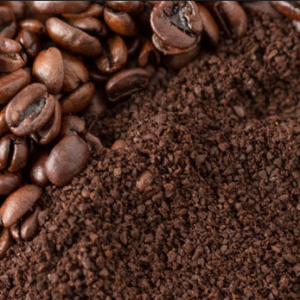 Once you are done with your cup of brewed coffee, what do you do with the used grounds? Do you throw them away as garbage or consign them to the compost heap? Spanish researchers believe that using spent coffee grounds as a means of organic soil amendment will offer many benefits in agriculture and for the environment.
Once you are done with your cup of brewed coffee, what do you do with the used grounds? Do you throw them away as garbage or consign them to the compost heap? Spanish researchers believe that using spent coffee grounds as a means of organic soil amendment will offer many benefits in agriculture and for the environment.
Coffee is a very popular and healthy drink. Its heavy global consumption produces six million tons of used grounds each year. A lot of this biological residue ends up in landfills, to rot alongside the rest of the garbage.
Finding practical uses for this waste will not just reduce overcrowding in landfills, it will also get good use out of the remaining nutrients in the material.
Spent coffee grounds are made up of 82 percent carbohydrates and 13 percent proteins. Using it as an organic soil conditioner will greatly increase the amount of organic carbon in the soil.
Furthermore, it will also reduce the carbon dioxide that is being released into the atmosphere as air pollution. (Related: Adding silicate rocks to farmland could restore soil, protect against pests and disease, and capture CO2, improving global food security.)
Testing the effect of used coffee grounds on soil fertility and plant growth
Spanish researchers from the Universidad de Granada (UG) were interested in the potential use of spent coffee grounds as an organic means of soil amendment. They conducted an in vitro experiment to test its effects on different soils and on an important vegetable crop.
In their experiment, they combined three different variables. The first was the use of two different amounts of coffee grounds. They added either 2.5 percent or 10 percent to the soil.
100% organic essential oil sets now available for your home and personal care, including Rosemary, Oregano, Eucalyptus, Tea Tree, Clary Sage and more, all 100% organic and laboratory tested for safety. A multitude of uses, from stress reduction to topical first aid. See the complete listing here, and help support this news site.
They also used two different types of agricultural soil as the second variable. Calcisol is a type of soil that has a large secondary amount of lime in it. Meanwhile, Luvisol is made of two layers of very different materials, with an upper layer that is rich in humus and a heavily-leached lower layer that lacks both clay and iron.
These different combinations of soil amendment and soil types were cultivated over the course of either 15, 30, 45, or 60 days. They used lettuce as their test crop.
At the end of the cultivation period, the researchers analyzed the soil’s chemical and physicochemical characteristics. They evaluated the amount of organic carbon, nitrogen, potassium, and phosphorus in the soil.
They also took scanning electron microscope (SEM) imagery of the soil particulate matter. Lastly, they analyzed the rate of growth of the lettuce crops.
Spent coffee grounds make for excellent soil conditioner
The results of the UG experiment showed that both doses of coffee grounds improved the nutrients in the soil. The increases depended on the dosage of the soil amendment.
Organic carbon showed the greatest increase at 286 percent. Total nitrogen levels also registered a similarly significant increase of 188 percent. Potassium levels went up by a comparatively low 45 percent. At the other end of the spectrum was phosphorus, which rose by only nine percent.
Analysis of the SEM images showed that the soil aggregates incorporated the coffee grounds. Soil microbes grew over them with ease. Spent coffee grounds also improved the ability of soil to “breathe” by 10 times.
One drawback is that lettuce in actively conditioned soil grew much slower. The plants grew as much as 233 percent slower.
Last but not least, there were some differences between the Calcisol and Luvisol when it came to the effects of the organic soil amendment.
Based on these findings, the researchers believed that soil fertility could be immensely improved through organic amendment using used coffee grounds.
Written by Edsel Cook for Natural News ~ September 30, 2018

FAIR USE NOTICE: This site contains copyrighted material the use of which has not always been specifically authorized by the copyright owner. We are making such material available in our efforts to advance understanding of environmental, political, human rights, economic, democracy, scientific, and social justice issues, etc. We believe this constitutes a ‘fair use’ of any such copyrighted material as provided for in section 107 of the US Copyright Law. In accordance with Title 17 U. S. C. Section 107, the material on this site is distributed without profit to those who have expressed a prior interest in receiving the included information for research and educational purposes. For more information go to: http://www.law.cornell.edu/uscode/17/107.shtml“
